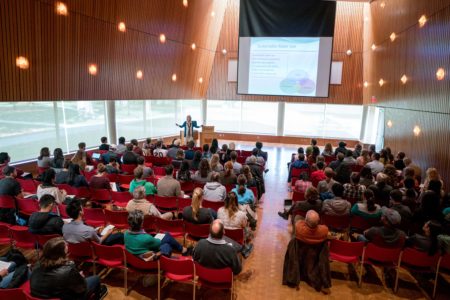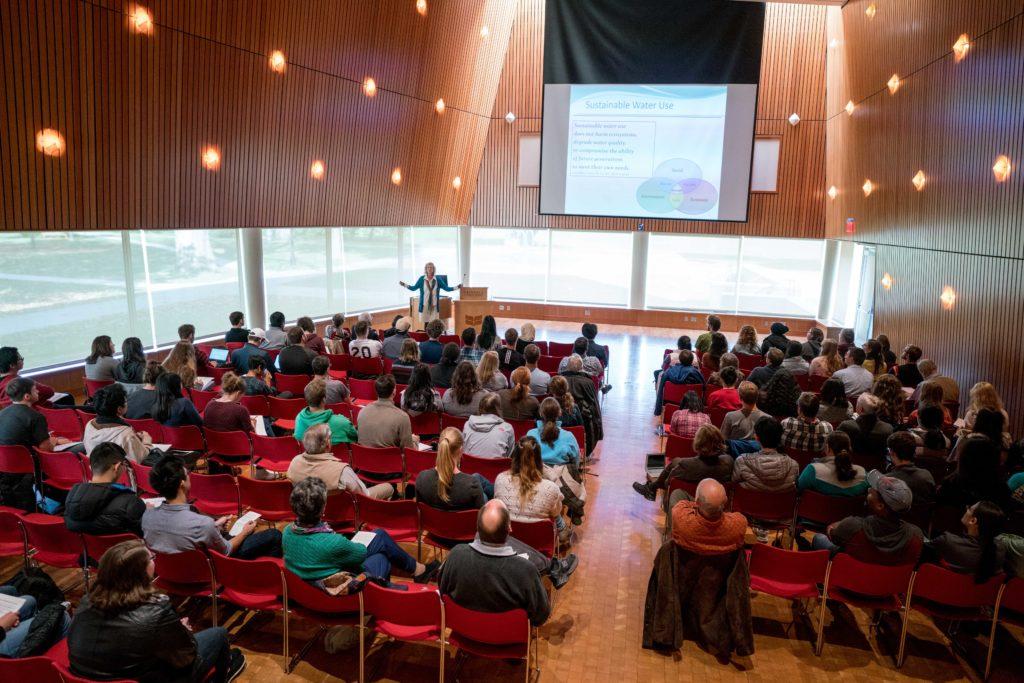By Michael Cummings
cummings@grinnell.edu
Many Grinnell students have fond memories of their first-year tutorial, but for some, tutorial had an especially big impact. Deborah Swackhamer ’76, who returned to campus this week to give the Danforth Lecture in Chemistry, was inspired by her tutorial on water 40 years ago to dedicate herself to the topic, becoming a professor of chemistry at the University of Minnesota.
The lecture was introduced by Professor Luther Erickson, Chemistry, the professor of that same tutorial. Erickson related to the audience how Swackhamer had been placed into his course in the very first year that tutorials were offered at Grinnell.
“Among the 12 students assigned to that tutorial was Deb Swackhamer, and the rest is history,” Erickson said, speaking of Swackhamer’s decision to major in chemistry and pursue knowledge in water and environmental issues. “[The chemistry department] continued to encourage her interest in environmental issues.”
Swackhamer spoke about her research at the confluence of chemistry and policy, examining the ways in which water is used, how it is polluted and how people can work to make water use more clean and efficient.
In particular, Swackhamer sought to break down public perceptions about water usage. Posing a multiple choice question to the audience, she asked whether domestic use, irrigation, livestock or thermoelectric cooling was the biggest source of water usage in Minnesota and Iowa. When the audience overwhelmingly voted for either irrigation or livestock, Swackhamer displayed some shocking statistics.

“The biggest use of water in both [Minnesota and Iowa] is thermoelectric cooling. It’s to generate electricity,” she said.
Thermoelectric cooling was the only one of the four options that made it above single digits in either state.
Swackhamer also spoke about being conscious of how much water was used in products you may use every day.
“It takes 300 gallons of water to make a gallon of beer,” Swackhamer said. “It takes almost a thousand gallons of water to make a gallon of wine. … A pair of blue jeans, to grow the cotton, to irrigate that cotton, 2,100 [gallons of water]. A chocolate bar, one regular chocolate bar, almost 4,000 gallons.”
While Swackhamer stressed that she wasn’t asking us to give up these items cold turkey, it is extremely important to remain conscious of how much water you are actually using in your day to day life, and to be aware that water usage goes beyond what you use in the shower or at the sink.



















































